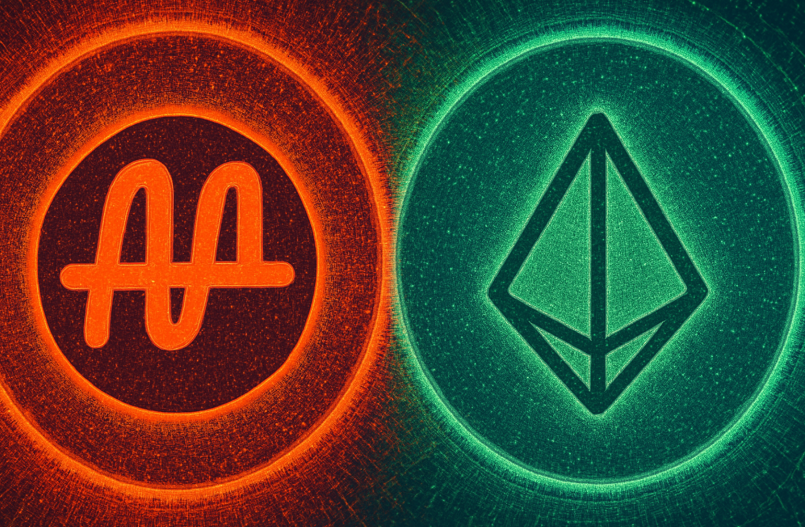Within the NeoWorlder ecosystem, a lot of attention goes to the visible parts: the AI personas, the worlds, the marketplaces, and the tokens. But what many people don’t realize is that one of the system’s most important components sits quietly behind it all: The Prism.
The Prism isn’t just another feature; it’s the mechanism that generates NeoWorlder’s core token: $MDR. It’s where participation, time, and value meet. While it might look like a simple mining platform on the surface, it actually shapes how users interact, earn, and contribute to the broader ecosystem. Understanding The Prism is key to understanding how NeoWorlder works.
Before it became The Prism, the platform was known as the Arena, a project first built under ThemeWorlder. When NeoWorlder took over, the name changed, but the core idea stayed the same: a place where users could earn $MDR (Multiverse Drawing Rights), an Ethereum-based utility token used across NeoWorlder.
In the original version, players joined timed, auction-style games where they bid on NFTs using BUNs (bid units). When the timer ran out, the last bidder won the NFT, but everyone who took part earned some $MDR at a 42:10 ratio, meaning that for every 42 BUNs they bid, they received 10 $MDR.
The New Prism
The system has now evolved into a new platform where the concept of auctions and bidding has been removed. The Prism still serves as a mining ground for NeoWorlder’s core token, but the process has been simplified while keeping the element of strategy and gameplay intact.
The updated model is built around a fixed supply of 364 NFTs. Participants in the Prism can choose to lock any one of these NFTs for one of two main purposes:
- To allow all participants to mine $MDR from that NFT.
- To block $MDR mining on that NFT for a certain period of time.
Participation in the Prism
Users can choose to add time to an NFT to either mine $MDR or delay mining. Each minute they add costs $0.80.
When a mining campaign begins, it automatically starts with a 48-hour countdown. Users can then add extra time by paying $0.80 per minute. Each minute added extends the countdown, so the campaign keeps going longer.
For example, if you add 10 minutes, the timer changes to 48 hours and 10 minutes. If someone else adds 2 more hours, the new total becomes 50 hours and 10 minutes.
Each person can add up to 5,000 minutes (around 83 hours) in one session. This means each person can spend a maximum of $4,000 on each session.
When the countdown finally reaches zero, the campaign ends, and $MDR rewards are distributed based on how many minutes each user added. Every minute contributed adds time to the countdown and cannot be refunded or taken back.
Once the timer drops below one hour, no more contributions can be made. This cutoff ensures that all last-minute contributions are properly processed by the system. If a participant contributes just before the one-hour mark, their contribution might not reach the server in time. In that case, it will be rejected and not counted.
The main idea behind The Prism was to move away from the kind of mining that only machines can do, and make it something that people themselves could take part in directly.
In most crypto systems, you plug in hardware and let it do the work. But here, the real resource isn’t electricity or processing power, it’s time. Every minute a person contributes becomes proof that they were present and engaged. We wanted to build a system that measures participation, not just computation.
Enable Mining Mode
In Enable Mining mode, every minute of participation generates 3 $MDR. All rewards are distributed among contributors based on the number of minutes they’ve contributed, but the payout only occurs once the timer reaches zero. All earned $MDR is stored in participants’ centralized accounts, and withdrawals are processed once a week.
Delay Mining Mode
In Delay mode, every minute contributed to the NFT pauses all mining activity for that duration. While the NFT remains locked in this mode, the owner cannot unlock, transfer, or sell it. The NFT can only be unlocked and removed from the platform in the final hour.
In both mining and delay modes, the NFT owner earns $0.16 per minute contributed, with all payouts released only after the timer expires.
The $0.80-per-minute model and the $0.16 NFT-owner reward weren’t random. They create a living loop: people put in time and money, NFT owners earn yield, and the system releases $MDR, a token that represents that collective activity. It’s like turning time itself into a shared resource.
So the goal wasn’t just to design a game; it was to experiment with a new kind of value system, where people’s presence and decision-making actually create the currency, instead of machines doing it for them.
Who Can Participate?
To take part, participants must:
- Have a commercial profile, which is instant and free. Users just need to agree to the terms and conditions.
- Receive an invite to join. There are 20 special NFTs in a separate collection, and each one can release up to 500 invites per year, making 10,000 invites total annually. Invites can be bought on the platform’s marketplace or transferred directly between users with commercial profiles.
- Use a Versa non-custodial wallet, funded with USDC, to purchase invites and minutes. Only users with commercial profiles can have a Versa wallet after they’ve undergone a KYC verification.
A few questions were raised during the design of this new system, for instance, the issue of fair access. Because participation costs money, $0.80 a minute, people with more resources can potentially influence outcomes more. We’ve tried to design limits and rules to keep it from becoming pay-to-dominate, but that tension will always exist in systems that mix capital and time.
Another concern is economic stability. The value of $MDR depends entirely on collective activity; it only holds weight as long as people keep showing up. If participation slows or interest fades, the loop weakens. In that sense, The Prism isn’t a static system; it’s a living one, powered by attention and engagement. That makes it both exciting and risky.
To strengthen this, we’ve focused on building intrinsic motivation, not just financial reward. We’ve anchored $MDR deeply into the wider NeoWorlder ecosystem, so its value extends beyond The Prism itself.
$MDR holders will be able to use their tokens to access governance, influencing how the platform evolves, purchase virtual plots, and manage broader assets within NeoWorlder. In other words, the more someone engages in The Prism, the more doors open across the entire network.
Final Thoughts
The Prism might not be the most talked-about part of NeoWorlder, but it’s one of the most defining. It ties the platform’s ideas about time, participation, and ownership into a single, working system.
As $MDR continues to grow in purpose, from governance to land ownership, and beyond, the Prism becomes more than a tool for earning. It becomes the foundation of a network that values human presence as much as everything else. In many ways, it’s the quiet engine driving NeoWorlder’s future.



